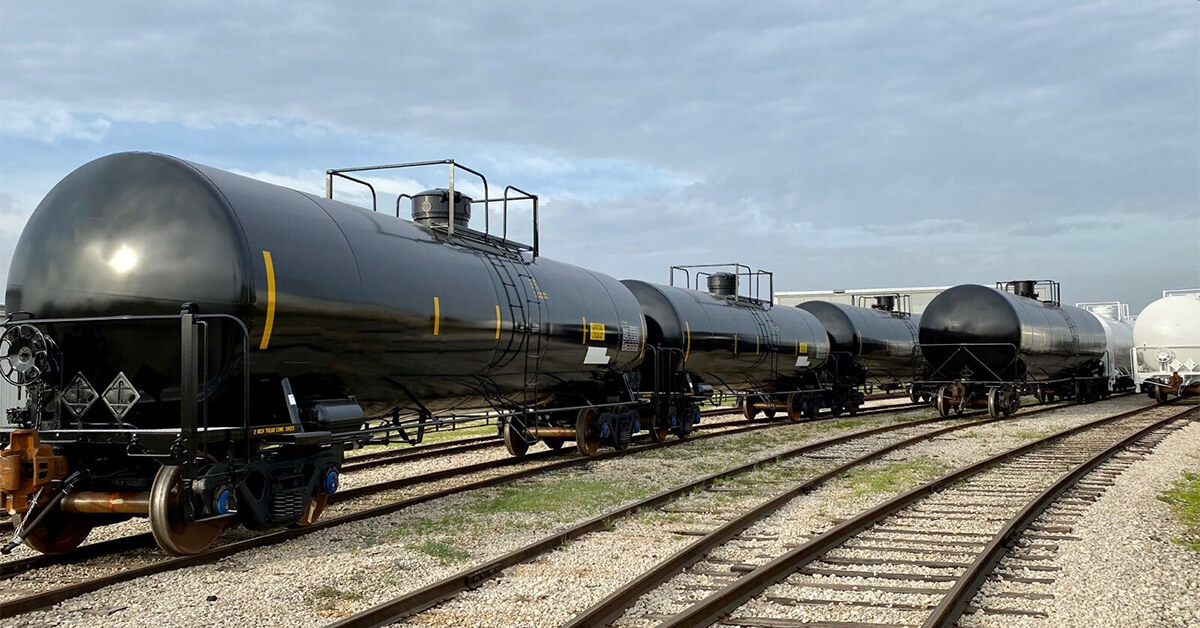
When it comes to choosing the right coatings to protect your railcars, it can often seem like there is an endless list of potential options available. This blog post explores the various factors that should be considered when selecting a coating for the exterior of your railcar fleet to ensure it’s the best choice.
Identify Your Performance Requirements
When selecting an exterior railcar coating, the first step should be to identify its performance requirements. Color and gloss retention, chemical resistance and abrasion resistance are just a few factors to consider during this process. Some coatings, like polyurethanes, have higher gloss retention, but their chemical resistance may be lower than other, more suitable technologies. On the other hand, epoxies typically have a higher chemical resistance than polyurethanes, but usually display lower gloss retention. One owner may value appearance, while another may value long-term asset protection—leading them to select different coatings for their railcar fleets.
Given that not all railcar fleets provide the same services or have the same requirements, there are some basic questions that must be considered before choosing a coating. As a fleet manager or fleet owner, some of the critical factors that affect this decision are:
- Service & Exposure: Does the rail car transport chemicals? Is it exposed to a corrosive atmosphere, such as a chemical plant?
- Service Life: How long should the exterior finish last? Is a service life of 5-10 years sufficient, or does it need to last for 10-20 years? What is the maintenance schedule?
- Aesthetics: Is physical appearance critical? Are long-term color and gloss retention desired? Or is corrosion protection more essential than aesthetics?
- Cost: Does the owner or manager need a long-term solution? Or does the coating just need to last until the next scheduled maintenance?
The answers to these questions steer the specifier to select the coating that best matches their individual needs. Some coating technologies are incredibly versatile, accommodating most performance needs—but all have their strengths and weaknesses.
Weigh the Pros & Cons
The next step is to consider the pros and cons of each railcar coating. The three most commonly used coatings for railcar exteriors—polyurethanes, epoxies and acrylics—are explored in more detail below:
| COATING TYPE | SERVICE LIFE | PROS | CONS |
|---|---|---|---|
|
Epoxy |
5-20 years, depending on formulation |
|
|
|
Polyurethane |
10+ years |
|
|
|
Water-Based Acrylic |
10+ years |
|
|
For most owners, cost and service life are the two most important factors when choosing a coating. Railcars are requalified for service every 10 years, and the standard expectation is to service the railcar over a 20-year period.
Consider the Long-Term Investment
So, how much money could a fleet owner save over the life cycle of a railcar with a coating that offers a service life of 20 years instead of just 10? Frequently, the decision about which exterior coating to select is based on price per gallon, not the life cycle of the car. However, the railcar typically starts to rust and the exterior structure begins to break down within 10 years—drastically increasing maintenance costs.
For example, let’s compare an epoxy coating that costs $29 per gallon, but requires repainting every 10 years, to an epoxy that offers a 20-year service life at $40 per gallon. Which one is the most cost-effective option over a 20-year period?
Railcar A (10-year service life): 10 gal x $29 per gal x 2 applications = $580
Railcar B (20-year service life): 10 gal x $40 per gal x 1 application = $400
This example doesn’t account for the additional labor costs required for the second coating application associated with Railcar A. As illustrated above, with $180 saved in material costs, plus the extra labor savings, it makes sense to invest in the coating technology that will achieve a greater service life and return on investment (ROI) over the long run.
When making a coating selection for the exterior of a railcar, it is crucial to consider the factors outlined in this blog post, as a properly selected coating can result in considerable savings for fleet managers and owners. The right coating manufacturer can help you navigate these challenges while ultimately maximizing your ROI.
Need Help Choosing the Right Protection for Your Railcar Fleet?
Download our rail market brochure for ideal coatings, linings and fireproofing solutions.
